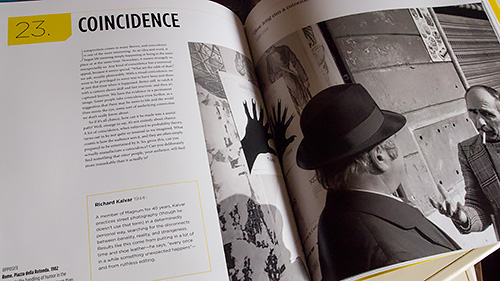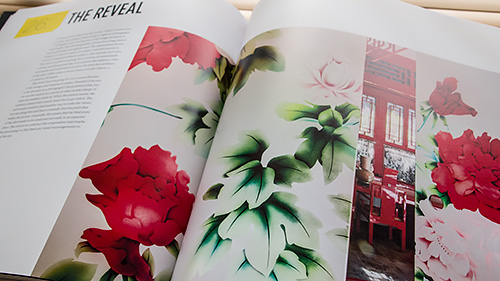Photo Corners headlinesarchivemikepasini.com
![]()
A S C R A P B O O K O F S O L U T I O N S F O R T H E P H O T O G R A P H E R
![]()
Enhancing the enjoyment of taking pictures with news that matters, features that entertain and images that delight. Published frequently.
Book Bag: Fifty Paths to Creative Photography




24 October 2016
There's a long line of opinion from Plato through Kant that hold creativity to be unteachable and to be the province of genius," photographer Michael Freeman points out. "I don't agree."

We don't much agree either. But we've always liked the way the Italian philosopher Benedetto Croce put it in Aesthetic:
Each of us, as a matter of fact, has in him a little of the poet, of the sculptor, of the musician, of the painter, of the prose writer: but how little, as compared with those who bear those names, just because they possess the most universal dispositions and energies of human nature in so lofty a degree! How little too does a painter possess of the intuitions of a poet! And how little does one painter posses those of another painter! Nevertheless, that little is all our actual patrimony of intuitions or representations.
We each have a bit of the artist in us. But it only exists to the extent we express it. And by that we mean simply to actually do it.
What Freeman attempts to do in this book is lay out an all-you-can-eat buffet of photographic possibilities. If you're hungry, grab a plate and pile it up.
You won't be able to eat everything, but you'll find a morsel or seven quite palatable, delicious even, something to try at home.
If we have one gripe about the book it's the title. You may have noticed the Web is rife with headlines that include a number (which is generally not spelled out). A recent actual example: 10 iPhone Photography Tips To Quickly Improve Your Photos.

Freeman's title starts with a number, too. But at least he spells it out (which, is proper style, after all). But it's a distraction. We had to ignore it to really enjoy the book. So take a tip from us, call it Paths to Creative Photography. Much better. Much.
There's a nice spread on pages 8-9 that says just "PATHS." That's the ticket.
We did nevertheless stumble a bit on the first chapter, frankly. There Are No Rules picks on the Rule of Thirds, which is simply a long-standing compositional aid that is indispensable for wide-screen aspect ratios at least. It's also a fifty-first path to creativity, which would have thrown the title off, so Freeman must have felt some need to go after it.
It isn't the only rule he goes after in the first chapter. And when he goes after a rule he has a good example to show how it may creatively be broken.
A mind full of rules isn't going to be free to get to work, as Croce exhorts us. It isn't the business of art to follow rules. No museum, for example, ever instituted a policy that required observance of the rule of thirds for its acquisitions.

But we rather think of rules as well-worn paths to creativity that are unfortunately sometimes mindlessly followed. Conventions, as it were. The point is not to be mindless. To know where to begin but ask yourself if that's where you want to end up.
But that first chapter is doing it's job. It got our dander up, it got a conversation going. It assaulted our bias with evidence to the contrary.
And Freeman's collection of evidence makes the book into a good excuse for a photography textbook. Just look at the pictures. In addition to Freeman's work, the book includes images and quotes by many other notable practitioners.
Here's just the A's: Ansel Adams, William Albert Allard, Diane Arbus, Eugene Atget, Richard Avedon. The Museum of Modern Art, Magnum Photos and Getty Images were simply plundered in the creation of this book.
That's enough to recommend it, but Freeman always adds to it with an intelligent discussion of what you're looking at.

There's a series of chapters on light near the end of the book that particularly won us over. In Work the Light, Freeman points out how large the subject is but gives four ways to start exploring it including using a bare-bulb as your source of illumination. In Extreme Light he quotes Jay Maisel, "The drama of light exists not only in what is in the light, but also in what is left in the dark. If the light is everywhere, the drama is gone."
These little morsels from the buffet are all you need to put the book down and try something out with your own camera. And that's really the value of the book. Not fifty new rules to follow but a buffet of inspiration to nourish you.
In the end, there is only one path to creativity in any of the arts. And it is, as Croce suggests, to practice them. Not rehearse. Do. If you are an actor, act as you get on the bus. If you are a singer, let no shower pass without a performance. If you are writer, leave no napkin untouched by a leaky pen.
It is by doing you become. And Freeman, to his credit, provides plenty of suggestions to help you keep at it.
Fifty Paths to Creative Photography by Michael Freeman, published by Ilex Press, 224 pages, $24.99 (or $18.04 at amazon.com).
Comments
An excellent, if long, interlude ... which infuriated me early because I kept putting it down to take the camera off to somewhere. Freeman can see things that we can't... yet.
-- Michael Melneck